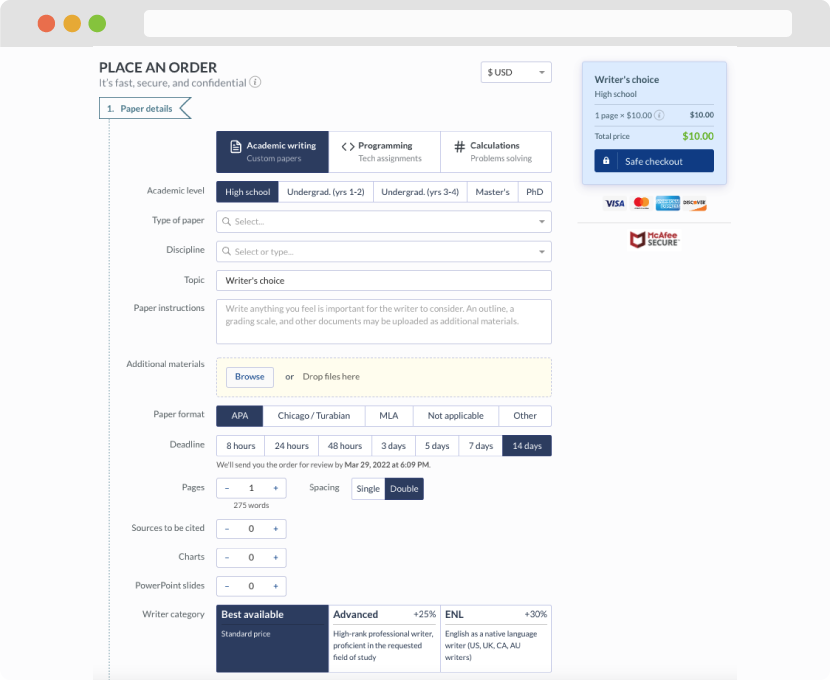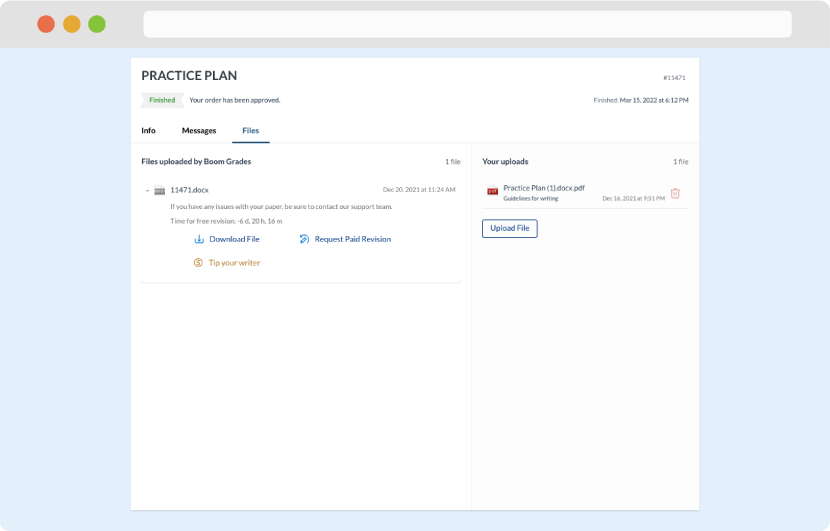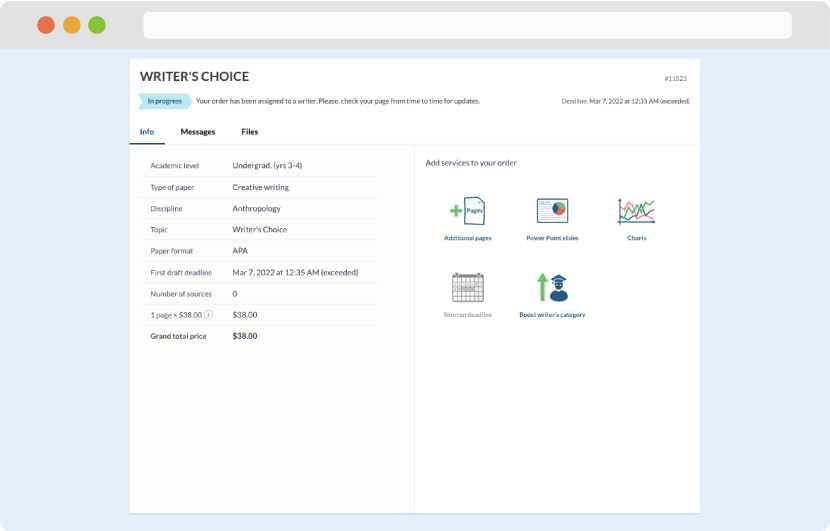UU-BBA-1000: Business EthicsUU-BBA-1000 Business Ethics
Final Assignment: 60 per cent of module grade
Final Assignment – Brief & Guidelines
Task: Read the Rover Case and answer all 4 question-parts
This is an Individual work
The word limit for each part is 1000 words (+/-10%)
The weight of each part is 25 marks
Use the APA Referencing System for reference purposes
UU-BBA-1000: Business Ethics
Page 1
UU-BBA-1000: Business Ethics
Case Study: The ‘English Patient’ and the Chinese takeaway:
Examining social responsibilities in the MG Rover collapse
This case discusses the collapse of Britain’s last remaining major car manufacturer MG Rover in
2005, and the subsequent loss of 6,500 jobs in the former industrial heartland of the West Midlands.
The case traces the role played by the firm’s directors as well as overseas car companies in the Rover
collapse, and provides the opportunity to examine the nature of social responsibility, and the relative
responsibilities of governments and corporations for safeguarding employment.
The name Longbridge stands for nearly a hundred years of British car manufacturing. The huge site
near Birmingham in the West Midlands area has been the stage for many of the peaks and troughs of
automotive history in the UK. Once the birthplace of the sporty, Austin Healey, the legendary Mini,
and the practical Metro, the site has also been associated in the 1970s with industrial unrest and
union militancy. More recently, the plant had started to become a virtual synonym for industrial
downturn and decay, and the reversal in fortunes of the British car industry.
It was a history with ups and downs, but the plant seemed to be in for a bright future when in 1994
BMW took Longbridge over from the British car manufacturer Rover. Despite suffering from underinvestment, BMW saw the Rover takeover as a suitable means of expanding its range of models
beyond the luxury segment that it had become famous for, into more medium-sized, family saloons
that appealed to the mass market. However, during the first five years of its involvement in Britain,
BMW invested more than £2.5bn (a3.8bn) in Rover, but productivity in the ageing facilities at
Longbridge never reached competitive levels. Despite massive job cuts, and the introduction of more
flexible work patterns, reports suggested that by 2000 BMW was running up annual losses of £880m
(a13.2m) on the Rover investment, more than £2 million a day! Such losses had major impacts on
BMW. As one of the smaller players in the international automotive industry, and under constant
threat of hostile takeover bids itself, the company’s management got clear signals from its
shareholders and from the financial industry that it had to either cure ‘the English patient’ (as Rover
was now known back at head office in Munich), or get rid of it.
UU-BBA-1000: Business Ethics
Page 2
UU-BBA-1000: Business Ethics
By March 2000, BMW signalled that it was about to act. Amid uproar from unions, local
communities, and the press, the UK secretary of state for trade and industry engaged in frantic
shuttle diplomacy between London, Longbridge, and Munich to try and stave off BMW’s imminent
withdrawal. However, despite offers of £150m (a230m) in government subsidies, BMW eventually
announced it was going to pull the plug on Rover, to the despair of workers and the embarrassment
of the powerless government.
Whilst finding a buyer for the ailing car plant was never going to be easy, the Rover business was
eventually sold in May 2000 to the ‘Phoenix Four’ consortium headed by former Rover CEO John
Towers. To sweeten the deal and hasten their own exit, BMW agreed to sell Longbridge to the
Phoenix group for a nominal ten pounds (a15), and even provided the group with a massive ‘dowry’
in the form of cash, assets, debt relief, and loans, said to amount to some £1bn. Towers and his
colleagues were hailed as heroes for averting catastrophic job losses and for keeping Britain in the
motor industry. They even resurrected the classic MG brand in the retitled MG Rover business.
Things were finally looking up at Longbridge.
However, the optimism was not to last long. MG Rover continued to lose money and productivity
failed to improve – but at least the spiralling losses of previous years appeared to be getting under
control. By 2003, full year losses were £77m compared with nearly £800m in 1999. Nonetheless,
with profitability still a distant dream, MG Rover agreed to sell off the Longbridge site for a much
needed influx of cash and rented back the land from the new owners. Finally in April 2005, with
sales plunging and a much touted rescue deal worth £1bn with the Chinese state-owned Shanghai
Automotive Industrial Corporation (SAIC) seemingly floundering, MG Rover hit crisis point again.
As the extent of the beleaguered firm’s troubles became more evident, and with a UK national
election due in a matter of days, senior government officials once again stepped in to try and save
the company and prevent the loss of thousands of jobs. A government loan of £6.5m to pay the
wages for a week did little to plug the holes in Rover’s finances and a frantic trip to China to try to
persuade SAIC to complete a buy-out deal failed, despite the offer of a further £100m bridging loan.
SAIC simply bought the intellectual property rights for the two main Rover models giving it the
opportunity to market the cars in China. With little other choice than to admit defeat, the MG Rover
boss, John Towers finally halted production, and called in the administrators in April 2005.
UU-BBA-1000: Business Ethics
Page 3
UU-BBA-1000: Business Ethics
The fall-out from the collapse looks set to be painful, messy, and drawn out. The British government
once again faced criticism for not acting earlier to save jobs, and a subsequent enquiry criticized the
government for making a loan that would probably never be recovered when the chances of securing
a last-minute deal with SAIC had been ‘remote’ – a finding that the opposition party seized on to
denounce the government’s ‘election bribe’. The Longbridge site itself was eventually bought from
the administrators by another Chinese company, Nanjing Automotive for £50m after a hard won
bidding war against SAIC and a British investor. Nanjing renewed the lease on Longbridge and
pledged to retain a limited amount of vehicle production at the site despite its ‘Chinese takeaway’
strategy of shipping out much of the Longbridge machinery to lower cost production facilities in
China.
Meanwhile, the UK’s accounting watchdog announced plans to investigate Deloitte over its role as
MG Rover’s accountant and auditor, whilst Towers and his fellow directors faced a barrage of
criticism for taking £40m in pay and benefits out of the failing business and squandering the £1bn
dowry from BMW. In its leader page on the day the administrators took over the company, the
Financial Times said the Phoenix directors had ‘betrayed the trust placed in them by their workers,
the government and the public by burning through someone else’s money’ – a criticism at least
partly ameliorated by a subsequent commitment by the directors to plough £49m worth of assets
back into the company to slow the company’s demise.
It is estimated that something like around 9–12,000 employees were made redundant in the West
Midlands as a result of the collapse – 6,000 at Longbridge and many more besides in the supply
chain. Despite the massive blow this has dealt to the area, close to a half of these have now found
new employment as the region moves to more highly skilled manufacturing and service industries.
Of course, the question of where the responsibility lies for the collapse remains. But it is perhaps
ironic that the only hope for UK’s last remaining major car producer lay with a state-owned
company from the Far East, while the British government’s incapacity to safeguard employment was
confirmed once again after the earlier failure to prevent the BMW withdrawal.
UU-BBA-1000: Business Ethics
Page 4
UU-BBA-1000: Business Ethics
Questions
Part A
Set out the main stakeholders in the MG Rover business at the time of its collapse. How
would you determine the relative importance of their stake?
(1000 Words – 25 Marks)
Part B
Think about MG Rover’s actions in the case in terms of Carroll’s pyramid of CSR – which
responsibilities was it upholding, and how would you say it was ranking them? Do you think this is
appropriate or inappropriate in this situation? Could it have done more to treat its employees
ethically?
(1000 Words – 25 Marks)
Part C
Arguments for corporate accountability and citizenship emphasize the declining power of
governments and the increasing power of multinationals. How would you assess the relative power
of the main actors in the MG Rover case?
(1000 Words – 25 Marks)
Part D
Who, if anyone, should take responsibility for preserving jobs at Longbridge – the company, its
directors, the UK government, SAIC, the workers themselves? Or is unemployment such as this
simply a ‘bitter pill’ that workers have to take in the face of industrial restructuring away from heavy
industry in developed economies?
(1000 Words – 25 Marks)
UU-BBA-1000: Business Ethics
Page 5
UU-BBA-1000: Business Ethics
In essence, your report must be comprised of the following sections:
Cover page and table of contents.
Introduction.
Main body of the report (Adequately structured and thoroughly analyzed answers for all
questions of the assignment. All the elements that are included in the assignment must be
adequately analyzed and supported with material that is properly cited, paraphrased and
referenced from a wide variety of external sources).
Conclusions (bring together your main points, address the main points as indicated above and
adequately summarize the findings of your assignment).
Marking criteria:
Element
Presentation (General Presentation and APA referencing)
Essay content
Essay structure and organization
Language clarity and accuracy
Weight (%)
10
60
20
10
The following points should be noted for this part of the assessment:
This is an individual report.
The total number of words for this report should be 4000 words (+/- 10%). As indicated
above each of the four questions must be roughly 1000 words and weighs 25% of the
overall assignment grade. This does not include the reference list and any appendices the
report may include.
The report should be your own work and properly referenced according to the
requirements of the APA Referencing system.
Literature should be sourced from a variety of external sources such as textbooks and
journal articles.
The report must be submitted in a single word document using the corresponding link
found in the toggle titled “Final Examination” and it will be automatically checked with
“Turnitin”.
Accurate referencing of sources is crucial in this examination. Please REFERENCE all sources
using the APA referencing system and make sure that you are familiar with this.
Please familiarize yourself with the regulations on late submission.
This assignment carries a weight of 60% of the final module grade.
The passing grade for this assignment is 60%.
This examination must be submitted on the due date (the last day of your course period) by
11:59 pm (23:59 hours) VLE (UTC) time at the latest.
Feedback will be available within 6 working days.
UU-BBA-1000: Business Ethics
Page 6
Essay Writing Service Features
Our Experience
No matter how complex your assignment is, we can find the right professional for your specific task. Achiever Papers is an essay writing company that hires only the smartest minds to help you with your projects. Our expertise allows us to provide students with high-quality academic writing, editing & proofreading services.
Free Features
Free revision policy
$10Free bibliography & reference
$8Free title page
$8Free formatting
$8How Our Dissertation Writing Service Works

First, you will need to complete an order form. It's not difficult but, if anything is unclear, you may always chat with us so that we can guide you through it. On the order form, you will need to include some basic information concerning your order: subject, topic, number of pages, etc. We also encourage our clients to upload any relevant information or sources that will help.
Complete the order form
Once we have all the information and instructions that we need, we select the most suitable writer for your assignment. While everything seems to be clear, the writer, who has complete knowledge of the subject, may need clarification from you. It is at that point that you would receive a call or email from us.
Writer’s assignment
As soon as the writer has finished, it will be delivered both to the website and to your email address so that you will not miss it. If your deadline is close at hand, we will place a call to you to make sure that you receive the paper on time.
Completing the order and download